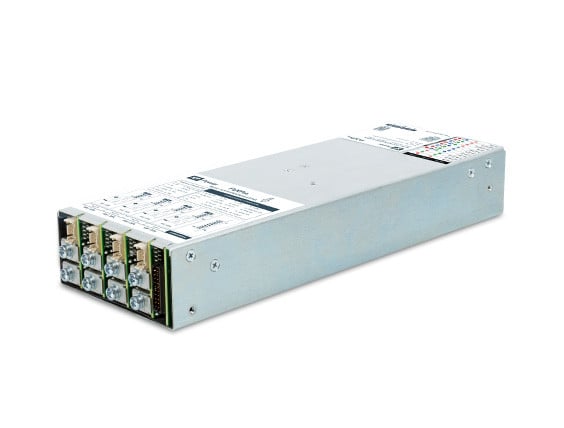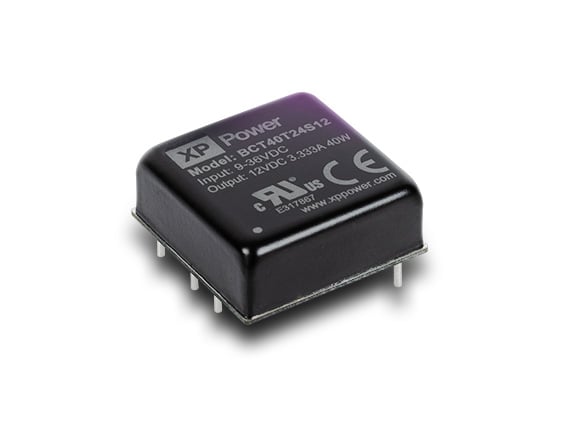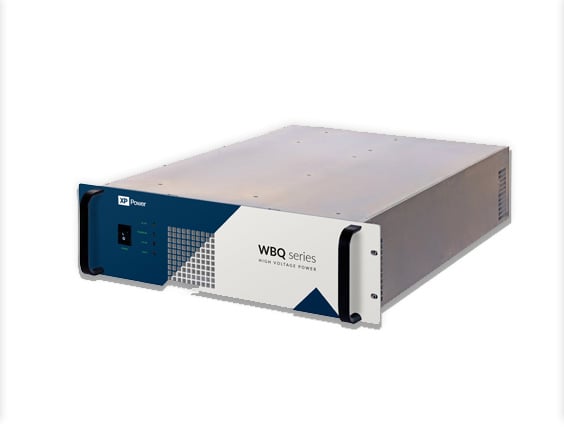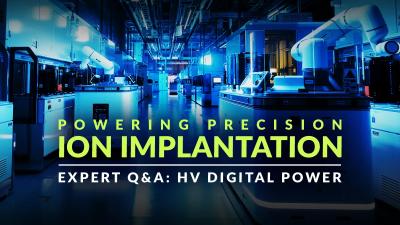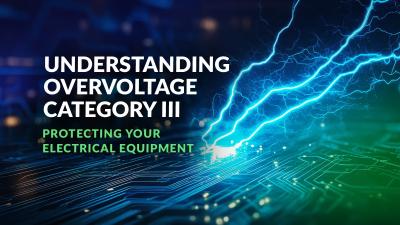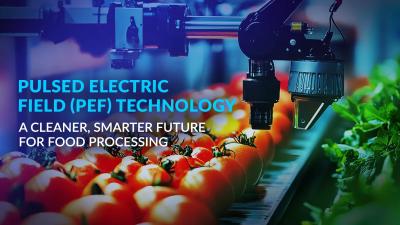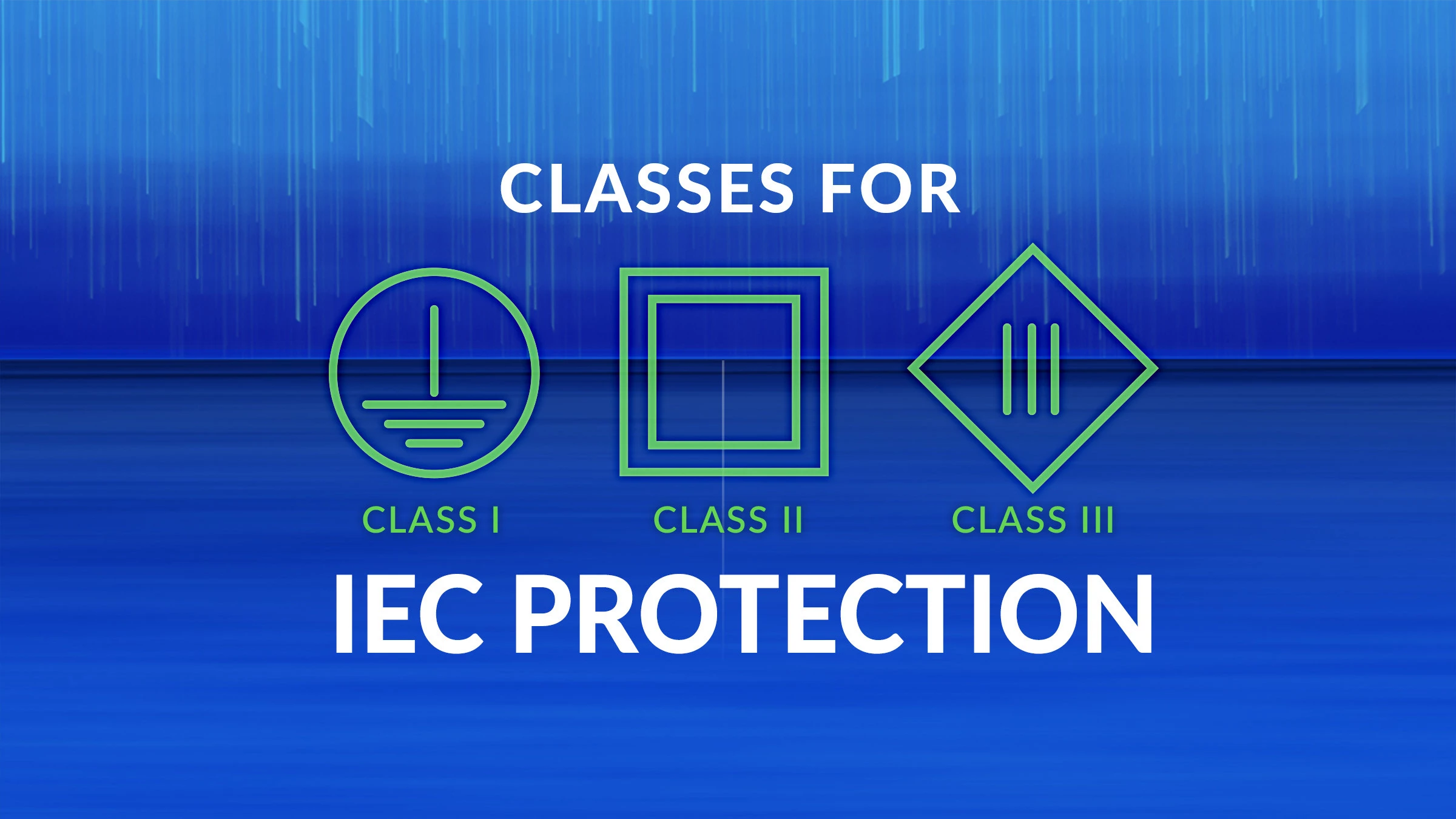
Our Senior Product Manager explains electronic protection regulations, and how to tell which specific class your new power supply falls under, and why.
OVERVIEW
An outline of the IEC class distinctions, I, II, and III.
How IEC protection classes are used in the electronics industry to distinguish between protective earth requirements of devices.
The important difference between an IEC Class II power supply and an NEC Class 2 power supply.
The International Electrotechnical Commission (IEC) has set out three safety classes for power supplies — otherwise known as appliance classes or protection classes. These are used to identify and implement methods that prevent power supply users from potential electric hazards.
While these risks are divided into three clear categories, they are not always easy to follow, which is why our Product Manager Andrew Bryars will break down the specific meaning of each class to clear up any confusion surrounding the topic.
IEC protection classes
Power supplies fall into one of three protection classes, based on the need (or not) for a protective earth connection known as ‘earthing’. This works by providing a path for a faulty electrical current to flow to the ground, shielding users from shocks when equipment insulation fails.
Class I - where user protection from electric shock is achieved through a combination of insulation and a protective earthing/ground.
Class II - where user protection from electric shock is achieved through two levels of insulation (either double or reinforced), without the need for earthing.
Class III - where the input is connected to a safety extra-low voltage (SELV) circuit meaning no further protection, such as earthing, is required.
Download Your Essential Guide to Power Supplies - a must-have technical resource for system designers.
Earthing and insulation
Earthing refers to how individuals are protected from electrical hazards when failures occur, which is usually due to excessive power overloads, voltage stress, or aging materials. The result of this can be dangerous voltages, fires and explosions, damage to property, injury, and even fatalities. When such failures happen, “a short-circuit current (which is many times higher than the normal operating current) flows through the safety ground wire and via the earth back to the start point of the distribution transformer”.
Protective conductors are what constitute earthing protection systems. These serve to channel a faulty current securely into the earth and direct it away from people who may come into contact with it, with a circuit breaker, or fuse, stemming the flow of electricity into a defective circuit. Insulation, on the other hand, uses plastic as an isolation barrier as it is a poor conductor of electricity — therefore, the current is affixed to its correct circuit, stopping any electrical leak without the need for a ground connection.
Some power supply protections utilize functional grounding instead of protective earthing. This process uses a transformer and allows the electricity to reach the ground while preventing the faulty current from doing so. Protective earthing does this too, but functional grounding is different because it does not provide protection from hazardous electric shocks. However, it helps to mitigate electromagnetic noise, which is vital for many medical appliances that suffer from interference from nearby electric equipment, such as pacemakers or defibrillators.
In understanding the three IEC Power Supply Protection Classes, you can identify and select the relevant power supply class based on safety requirements, regulations and pricing. If you have any additional questions, we’re happy to help.
Class distinctions
It is important to note the distinction between a Class II power supply and a Class 2 Limited Power Source (LPS), which is a power supply that relates to the volt-amp (VA) rating of the output being limited. VA refers to the level of power in a direct current electric circuit.
Class I Power Supplies
Class I power supplies protect the user through at least one layer of basic insulation first. It then uses a ground wire chassis — a grounding connection usually on the casing of the source — that grounds the hazardous voltage before it reaches the user should the basic insulation fail. A safety ground is a requirement for all Class I devices.
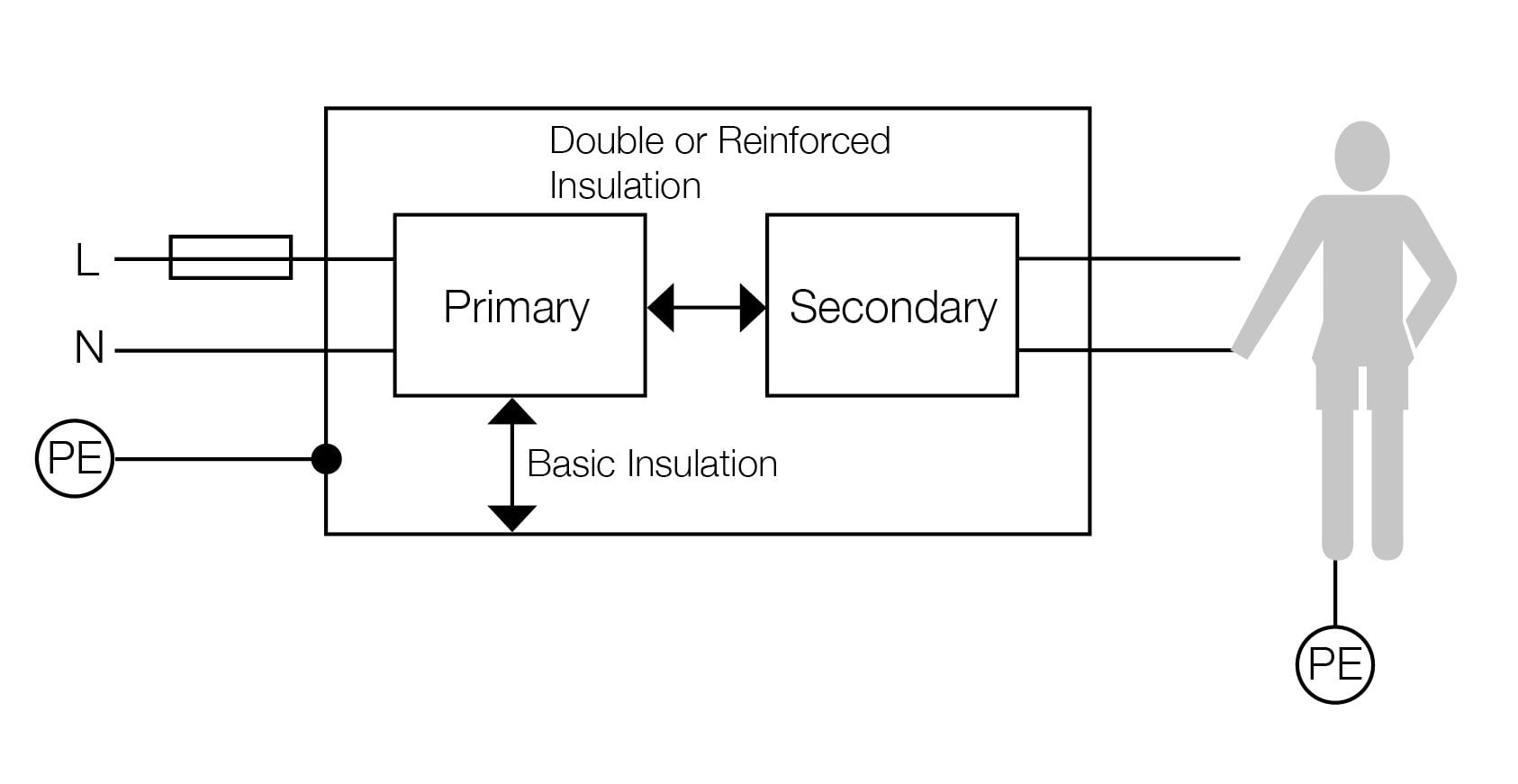
Class II power supplies
A Class II component, or open frame power supply, needs no earth connection for safe operation. The minimum distance from any live part to the enclosure must be observed whether it is conductive or not in order to maintain the two levels of protection needed against a single failure in the system. The use of a Class II external power supply is straightforward, with the main difference compared to a Class I product being that it requires only 2-core main leads for secure operation. Protection is maintained by double or reinforced insulation, rather than relying on both protective earthing and basic insulation. In this way, IEC Class II power supplies are not mandated to have a safety ground conductor brought to the power supply.
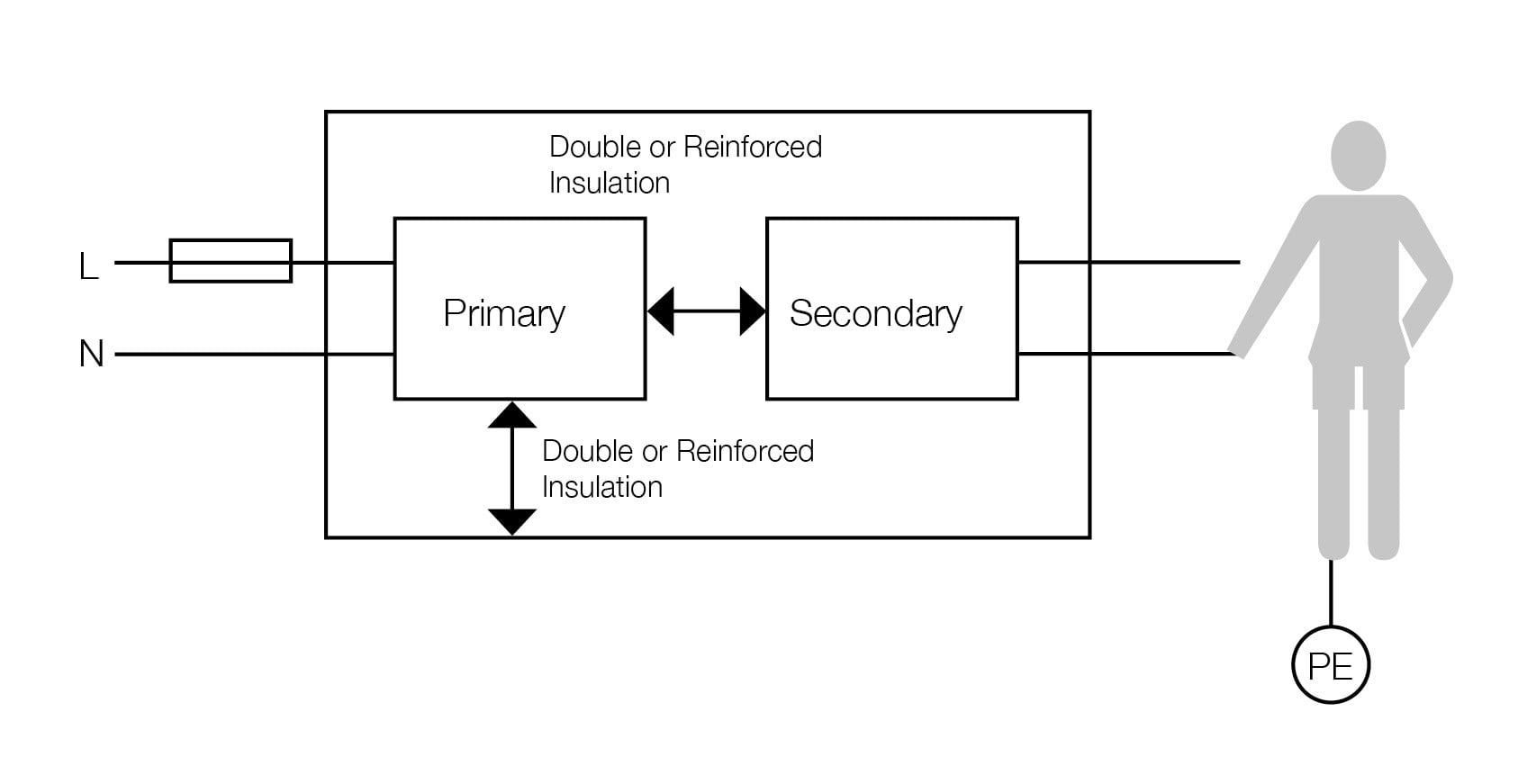
However, there is often confusion between the IEC Class II power supply and an NEC Class 2 power supply. The former describes the insulation protection to shield users from an electric shock, while the latter concerns the installation of an electrical system. NEC Class 2 is used to assess wiring requirements between supply output and load input, considering factors like wire size, installation, and deration (the amount of current that wires carry).
While a Class II power supply does not require a protective earth, some lower power Class II products find applications in Class I systems, and Class II applications often use a functional earth in the system. The Class II supply is designed to meet EMC requirements for emissions and immunity. However, if the output of the supply is connected to a safety earth or a functional ground, it will create a low impedance path for noise, altering the power supply’s characteristic performance. Therefore, it is likely that extra filter components will need to be fitted external to the power supply for emissions compliance.
Class III power supplies
For Class III equipment, the power source is not dangerous, meaning the user does not require protection from it. This is defined within IEC62368-1 under the heading "classes of equipment with respect to protection from electric shock" and is defined as equipment in which protection from electric shock relies upon supply from an ES1, or Class 1 energy source, and in which ES3, or class 3 energy source, is not generated. ES1 defines an energy source that Is safe to touch by an ordinary person.
For any inquiries, please don't hesitate to contact us or download our technical resource, Your Essential Guide to Power Supplies.
